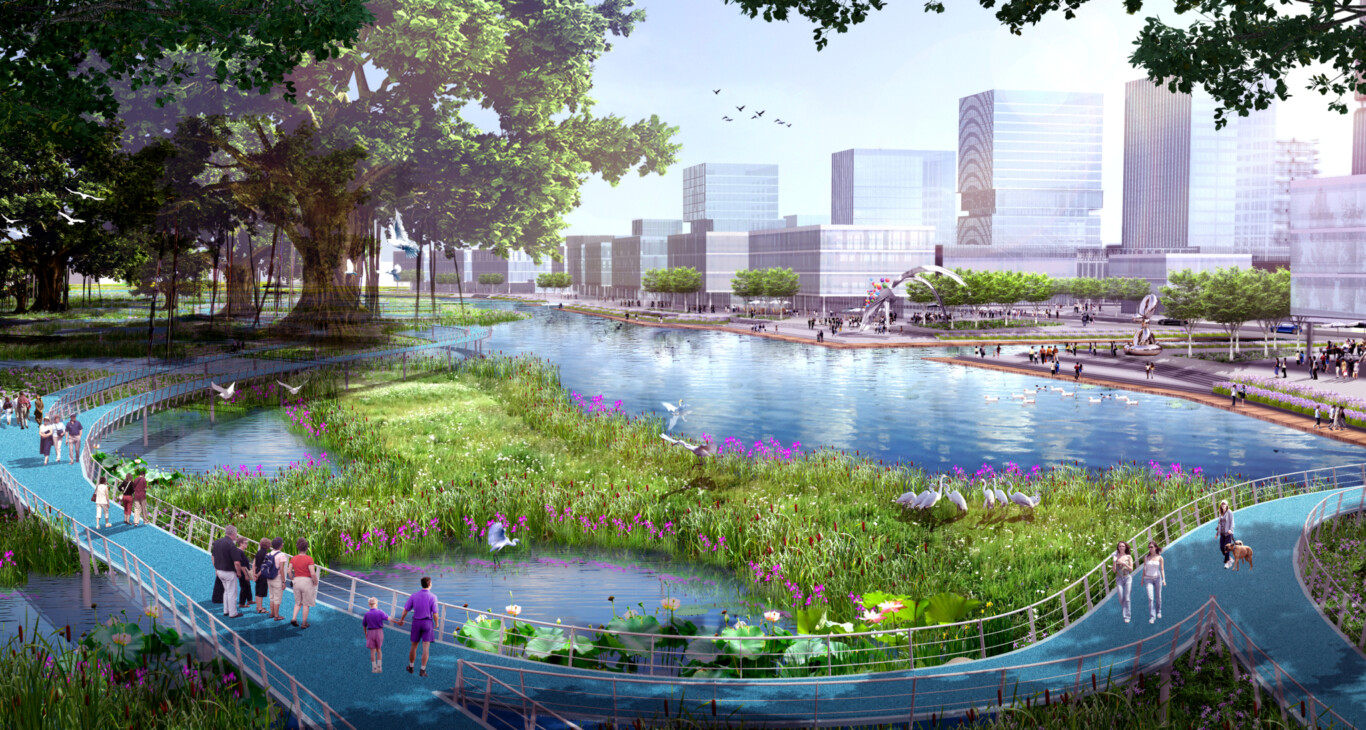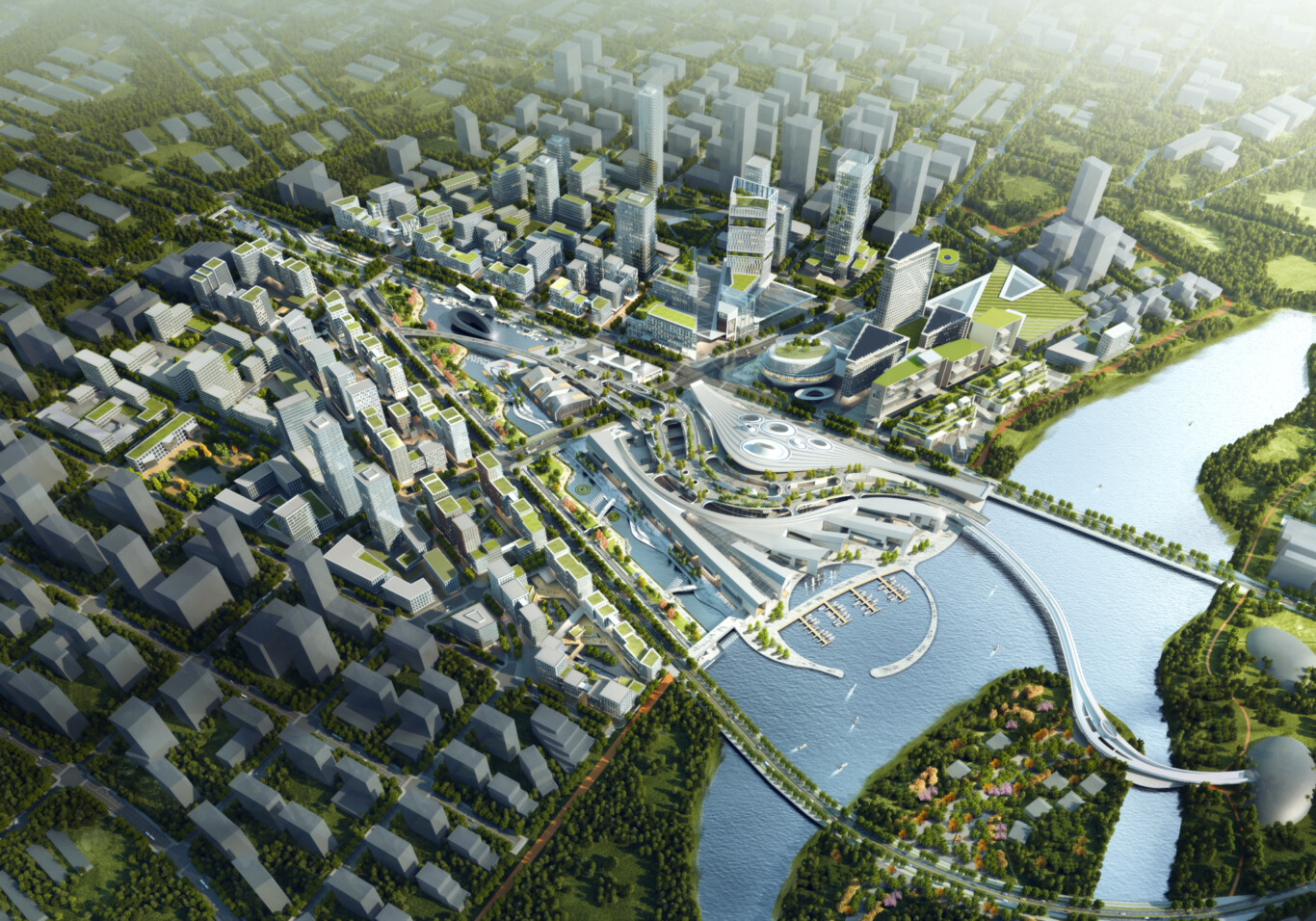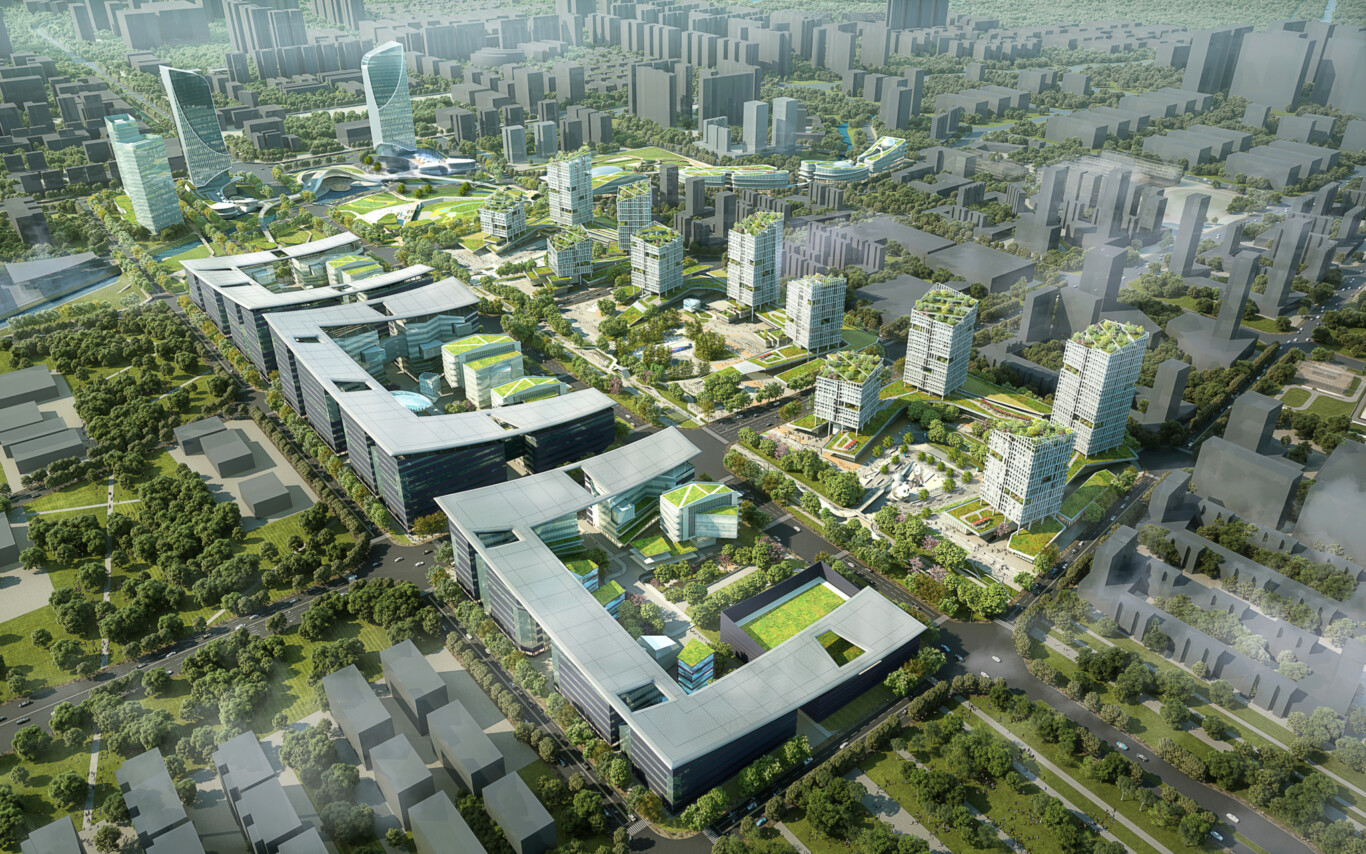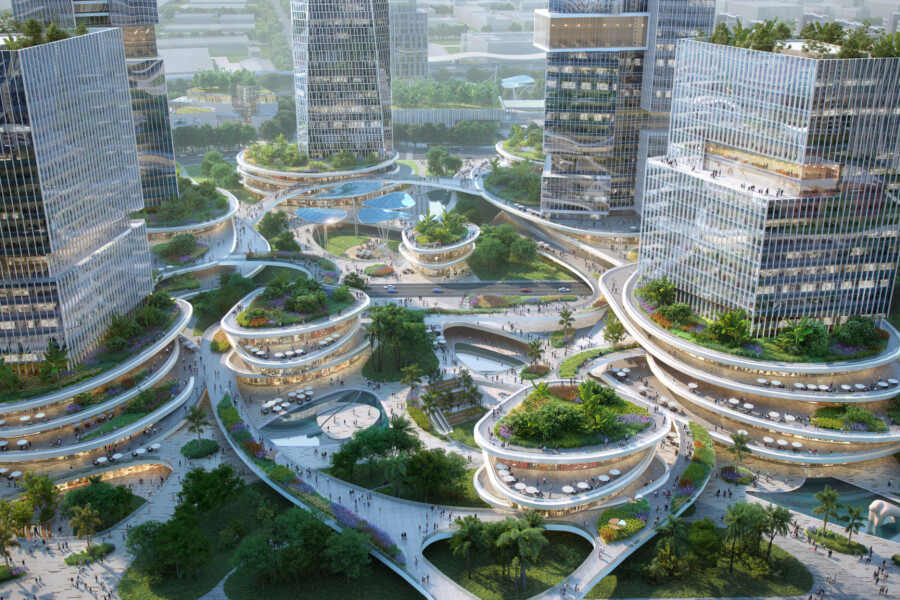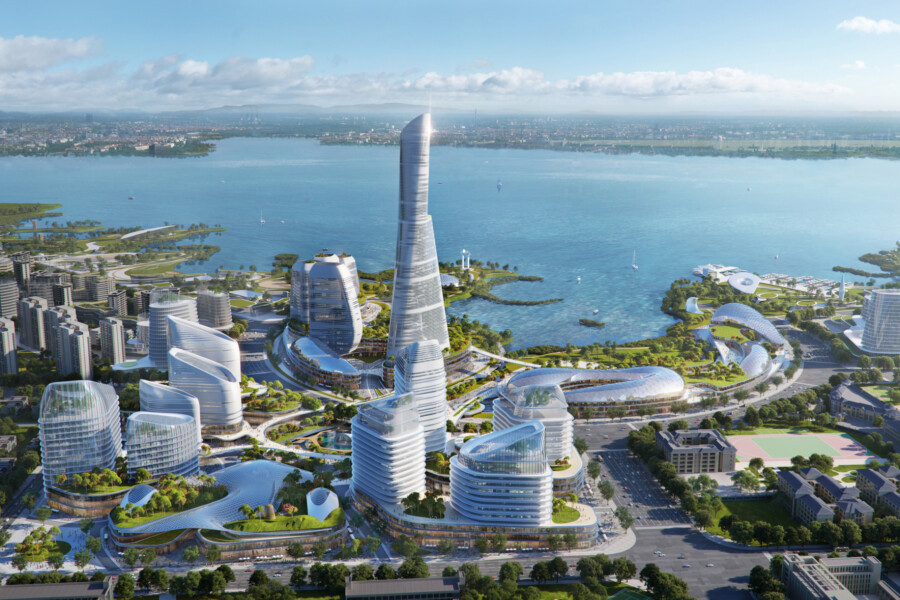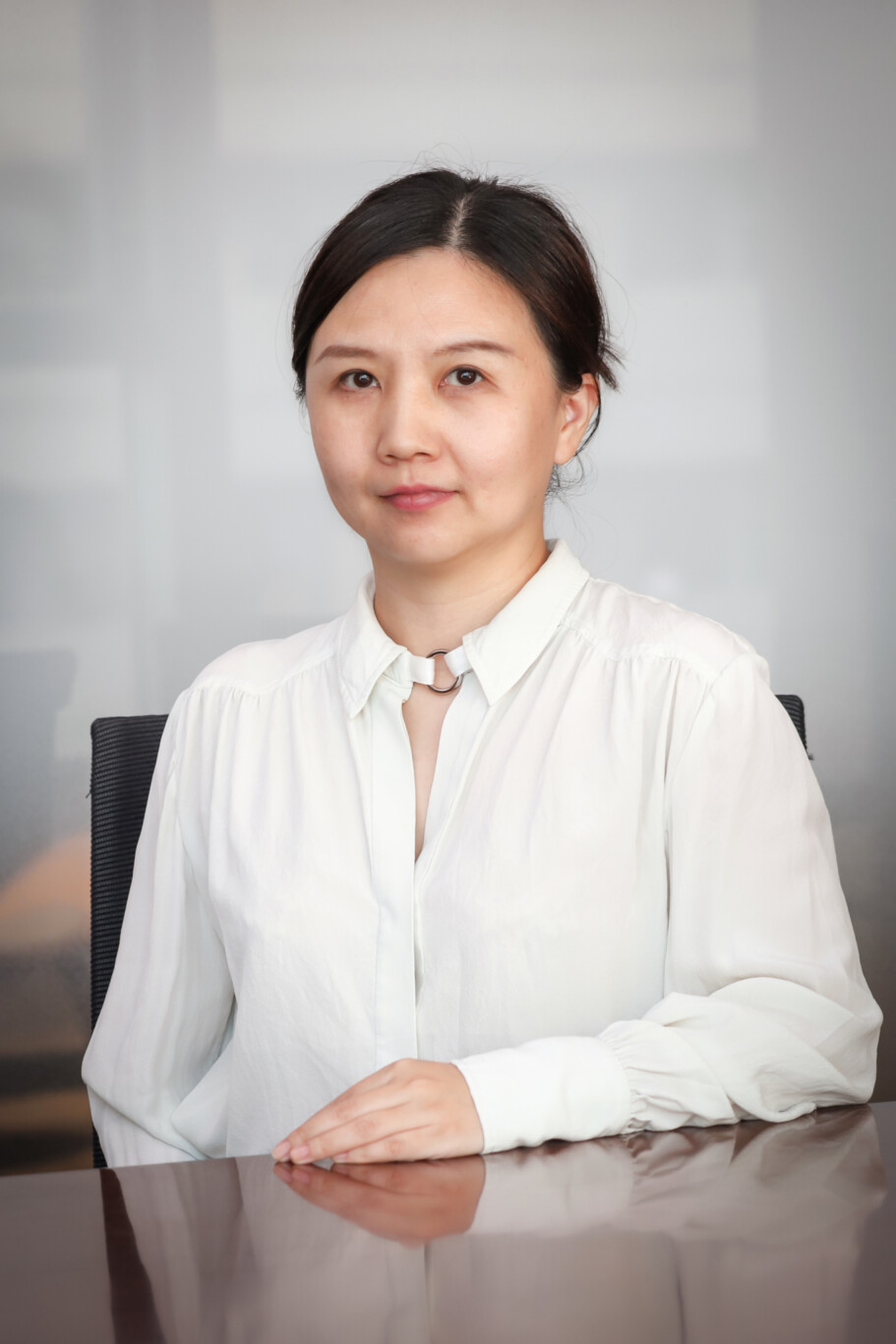
People profile: Chief Architect and Urban Designer in Shanghai, Charlene Zha
Charlene Zha joined Chapman Taylor in 2019 and is the main designer and project manager of the Shanghai masterplanning team. In this profile, she talks us through her background, having lived and worked in both Europe and China, and her extensive experience in urban planning and architectural design.
What were your early influences?
When I was a child I lived in a small town called Hohhot, to the west of China, close to the border with Mongolia. It’s like a ‘little Mongolia’, with a large Mongolian population.
My father worked in chemical engineering and my mother was a mechanical engineer. I became interested in architecture when I was in primary school because every day after school I would go to my mother’s office to wait for her to finish. The office would have construction models on display, and they would draw the renderings by hand, which fascinated me.
What and where did you study?
I completed my undergraduate studies in architecture in China before pursuing a master’s degree in Paris, France. I was drawn to the romance of Paris and I’d been learning French in tandem with my architectural studies. It was a great move because the National School for Architecture was based in an old stable building in the Palace of Versailles. Quite an inspirational environment for an architectural student!
In China, my studies were more focused on plans, facades and the shape of buildings whereas in France I was encouraged to think about space and how people feel. At graduate school one of my teachers used to emphasise that we weren’t just building boxes - it’s important to consider how people go inside and how they interact with the space once they are in it. That brings me a unique perspective and I strive to create designs that are not only aesthetically pleasing but also functional and user-friendly.
How long did you live in France?
I spent six years living in Paris. It’s a fantastic city. After I graduated, I worked for a small French studio. It was a nice environment and we’d cook together and share food at lunchtime. Working in Paris allowed me to think a bit more conceptually. We worked on some landscape projects and also smaller urban designs and we spent a lot of time understanding the people who worked and lived in the environments we were designing for. We tried to understand all of the passive information and all of the potential functions of a city.
I was also introduced to working on municipal schemes and my boss would take me along to meet governmental clients. It was a great way to understand how architects collaborate with different people and it introduced me to working on the construction aspect, too.
One of the projects I worked on was in Choisy-le-Roi. We worked on the renovation of some old buildings near the tramway station. There were fantastic columns and original features and our plans sensitively renovated the different areas into a retail offering. You could say it was my first introduction to a Transport Oriented Development too, although nothing like on the scale of the projects that we undertake in China.
When did you return to China?
In 2013 I moved to Shanghai. I started working for an engineering company, that was keen to develop its own in-house design studio. I worked on a variety of transportation-led projects, such as bus and metro stations and logistics parks. We had a lot of different departments responsible for, for example, construction, transportation and MEP, so I tried to learn as much as I could from each of them. During this period, I was also involved in masterplan design and gained a lot of experience in urban design, especially in transportation-oriented projects.
After gaining experience at the engineering company, I started to work for private companies. After a few years, I began to manage projects, which led to directly interacting with clients and also with the people who are involved in the construction work. I started to understand how to adapt to client needs and embed flexibility into plans.
What brought you to Chapman Taylor?
I learned about Chapman Taylor through my former colleague, Yichun. She spoke highly of the company and the opportunities it offered. I joined the masterplan department in 2019. I thought the people were really friendly and there was a high calibre of projects, such as the first project I worked on, Guangzhou Baiyun lake.
Xiong’an Intercity Station has been one of the most interesting projects I’ve worked on. As part of the team responsible for vertical city planning, we had to consider all aspects of vertical city planning. I had to coordinate with a number of different departments and even worked closely with our London studio, with regard to putting our competition entry together. One of the primary challenges we faced was determining how the station would integrate with metro and bus stations while still accommodating pedestrian flows both above and below ground. Also, we had to consider how the station connected with the surrounding commercial functions and buildings. To address these challenges, we developed an innovative connection system inspired by traditional Chinese urban block textures, which allowed us to organise the space "from the level of the alley to courtyard." We had multilayer underground connections leading to the core area and the surrounding plots, all of which had sunken courtyards in the interior. – something that was complex and interesting to plan and design. We were careful not to cover these courtyards too much to prevent them from becoming dark and uninviting. Most importantly, we had to plan what the different functions of these spaces would be, so visitors wouldn’t just get lost inside and be unable to navigate their way around. We had to organise the space and the flows of different people who have different objectives for their visit – different things to do and places to get to. Overall, Xiong’an Intercity Station was a highly complex project that required creative problem-solving and close coordination with a large team of consultants. However, I am proud to say that this experience has enabled me to become highly skilled at organising and understanding "vertical cities," and I have since worked on several similar projects.
Can you give me some examples of other projects?
While the Qilong project wasn't ultimately successful, it was still a valuable learning experience. There are 8-10 plots - regular shapes that need to link the functions on either side separated by roads and green belts. We also had to plan the functions of each area. We had planned for people travelling from the residential areas to the office areas, and also had to place transport and leisure options appropriately. We illustrated this concept by using traditional Chinese knots.
Shanghai East Station is another large masterplan concept that I have worked on. Most of the buildings were for commercial use, but we had to consider the intersections of the river, roads and parkland. We used a network of interconnecting bridges and underground connections. It’s a great illustration of combining nature, landscape and open space with buildings. The Eastern gateway of the city is marked by a graceful landscaped "living hill" leading to a garden with Chinese mountain-water landscaping and a rich variety of connected courtyards and charming waterfront environments.
One of our competition-winning masterplans was a collaboration with China Shanghai Architectural Design and Research Institute. Our concept design for the development of Yangpu Bay, an area of 5.21 km2 in Hainan's West Wing Development Belt. Originally salt producers, the people of Yangpu have a rich history and connection with the land and sea. We analysed the site and how to protect birdlife and wetlands, proposing an ecological buffer zone and two hard shorelines. Water streams from the mountains so we created a flood-adapted greenbelt for the city, using sponge city principles, protecting the farmland in the centre. We are now carrying out the subsequent detailed scheme design and implementation.
Are there any other aspects of design that are particularly important to you?
The more I design the more I realise it’s important not just to focus on the shape or the façade of a building or urban space, but to think about who will use it. When someone goes inside something that I have designed it must feel suitable for their needs. Cities are for people.
I’m also excited about the potential of emerging technologies, such as AI, that we can begin to start using. These tools won’t replace human skill and flair, but I believe that incorporating AI tools into our design processes can help us to enhance our work and achieve greater efficiencies. For example, we can use AI to streamline the labour-intensive task of producing design competition entries. At the moment we’re trying to learn how we can use AI as another tool in our armoury. It will play an important role in the future of design.
